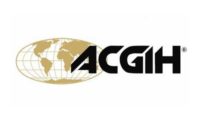The benefits of holding CSP® & CIH® certifications
Time to bridge the expertise gap




There’s a great imbalance between the two inseparable forces of safety and health. This imbalance is evident in Table I. The CSP® and the CIH® are the top safety and health credentials in our field. Both pre-date OSHA and both have grown in quality and value over the years.
Gap analysis
Why are there are 2½ times more CSP®s than CIH®s — a gap of 10,000 certificate holders.
Injuries dominate the mind of U.S. employers, creating the need for expertise to prevent injuries rather than prevent illness. This mindset is now challenged by evolving technologies and modern concepts. David Smith, chair of the committee developing ISO 45001, OHS Management System (should be final by first quarter 2018), reports “Of the 2.3 million work-related deaths a year, the majority (2 million) are a result of ill health and disease.”1
Here are examples of the differing mindsets in the field. A CSP® may scoff at Smith’s occupational illness fatality numbers; the CIH® may realize the numbers have merit. CIH®s generally dismiss behavioral safety training, preferring to emphasize the top of the hierarchy of controls, not the bottom.
Attitude problems
Many CSP®s tell me CIH®s are nerds. Many CIH®s tell me anyone can pass the CSP®. Holding both the CIH® and CSP® should be the hallmark of OHS professionalism. But a 2013 AIHA Compensation Survey found that 24.6 percent of respondents (about 1,700 pros, a mere 34 on average per U.S. state), hold both the CSP® and CIH® credentials.2
STEM requirements is most glaring difference in Table I. Fifteen of the 20 fastest-growing fields in the future require significant math and science preparation, according to the Bureau of Labor Statistics. In 2016, China and India, respectively, had 4.7 and 2.6 million STEM graduates; the U.S. had 568,000 STEM graduates in 2016.3
A bachelor degree in any field qualifies someone to sit for the CSP®. Can you take a non-STEM graduate, say a history or arts major, and make them STEM proficient in modern society? Research says it’s a difficult task.
Let’s look at the CIH® nerd argument. You need 900 contact hours in college/university STEM coursework, with 25 percent of coursework hours coming in the junior and senior years, to sit for the CIH® exam. Specific coursework must include fundamentals of IH, toxicology, measurements and controls. Even with this academic and education horse-power, most pros fail the CIH® exam on the first attempt. The reality is that every CIH® qualifies to sit for the CSP® exam, but not vice-versa.
Don’t paint every CSP® with a broad-brush. Early in my early career, hungry for technical knowledge, I approached three CSP® and PhD pros. Their application in IH matters, mold, silica, etc. were dangerous and life-threatening. Appalled by their STEM ignorance, I inquired about their doctorate degrees, which came from diploma mill.
Dabbling is de rigueur
CSP®s dabble in health and CIH®s dabble in safety. Full appreciation of each discipline, however, is lacking. Those three pros believed the dangerous nonsense they practiced – and preached. More troubling was non-STEM people believed the nonsense, too. Ethically the pros could hold onto their CSP® but had to drop the PhD after their name. Every pro should adhere to the Hippocratic Oath, historically taken by physicians, “First, do no harm.”
Criticism cuts both ways. I’ve watched a CIH® observe a machine safeguard. Because the safeguard included barrier fencing and light-curtains, the CIH® nodded that everything was okay – but it wasn’t. Deficiencies could lead to injury. Safety stuff often gets very technical, particularly today with automation and complex electrical circuitry. If the CIH® was also a CSP® I believe the deficiencies would not have been overlooked.
Differing mindsets have consequences
AIHA was the secretariat for ANSI/AIHA Z10-2005, OHS management system. Management, however, is not in AIHA’s blood. AIHA relinquished control and copyright for Z10 to ASSE in 2012. ANSI/ASSE Z10-2012 (R2017) is the new title.
Management vs. measurement mindsets have consequences in supervision. Solid numbers are elusive, but top level OHS programs are generally managed by a CSP® and the CIH® role is relegated to a reporting position. This suits some CIH®s just fine. But there are consequences. When allocating limited resources, should behavioral training prevail over installing exhaust engineering controls? Supervisors usually win these arguments.
The dichotomy between safety and health may be lessened by having the approximate 5,000 CIH®s without the CSP® obtain the CSP®; and, CSP®s that meet STEM academic/education requirements should sit for the CIH® exam. More pros must hold both credentials.
Incentives to hold both the CSP® and CIH®:
- A more balanced safety/health mindset;
- BCSP and ABIH (bodies that issue and manage the respective credentials) have facilitated date alignment and complementary efforts for recertification;
- Flexibility in supervision and management; and
- Monetary – pros are paid significantly more with duel credentials rather than holding just one.
Additional suggestions: In the distant future, a merger between ASSE and AIHA, perhaps being joined by NSC, makes political sense; BCSP should slowly ramp up STEM education requirements to sit for the CSP® exam; and pros should obtain the CSP® and/or the CIH® before other credentials.
CSP® or CIH® credentials demonstrate a sound understanding of principles. But you need experience and technical growth for full expertise about hazards and risks.
References:
Looking for a reprint of this article?
From high-res PDFs to custom plaques, order your copy today!








